


KUNIHIKO MORINAGA AND MAMORU HOSODA
DIMENSION
Mamoru Hosoda collaborated with Morinaga to create this great collection film. It begins with the formation of the clothes as Morinaga designed them, not through cut and drape but via cut and paste, and we see the garments as digital toiles made up of fractal contours true to the representation of futuristic facades stretching back to Metropolis and Tron. Then the dresses form more tangibly, but still in 2D, filling those vectored spaces with the angled jigsaw of reclaimed denim, chino cotton, and gabardine, plus reflective material (all seamlessly bonded) from which they are made. It slowly becomes kind of clear that we are seeing a fashion show in U, the virtual world which Belle’s heroine inhabits—and that it is also being streamed on U’s equivalent of YouTube. There are rooms within rooms within rooms.
.
仮想世界は二次元。非日常の世界。現実世界は三次元。日常の世界。仮想とは、現実にはない世界を仮にあるものとして考えてみること。現実とは、事実として目の前にあらわれている世界そのもの。2022年春夏コレクション「DIMENSION」は二次元と三次元を越境する。画面の中の世界は二次元。細田守監督最新作「竜とそばかすの姫」のアニメーションの世界。劇中に存在する仮想空間’’U’’でコレクションが幕を開ける。CGアバターモデルが、宙に浮くガラスのランウェイを歩く。画面の外の世界は現実。‘’U’’が投影された真っ白な空間を、実在のモデルが歩く。コロナ禍がもたらしたデジタルのファッションショーは、軽々と世界の距離を縮め、すべてをフラットにした。画面の中では、立体と平面の区別はなくフラット。画面の中と外の境界もまた、消えていく。画面の外で纏うだけでなく、画面の中でも纏うことができる。

Nicolas Bernier
frequencies (light quanta)
The project is part of an ongoing process entitled «frequencies», exploring basic sound and light dichotomic systems. Here, frequencies (light quanta) stems from a fascination towards science, light, and granular synthesis allowing to create clouds/grains of sounds. The conceptual focus lies in the quantum — the smallest measurable value of energy —, on the smallness of matter. The whole project is based on the possible conceptual relationships between basic quantum physics principles applied to the audio-visual creative process: particles, probabilities, wave/particle duality and discontinuity. Metaphorically structured around these notions, the audio-visual composition stems from 100 sound and light micro-sequences that develop themselves, generating an ever expending but yet disruptive form in time and space. With the use of randomness, the vectorial graphics are always creating new ways to look at the visual, physically superimposing pattern images.
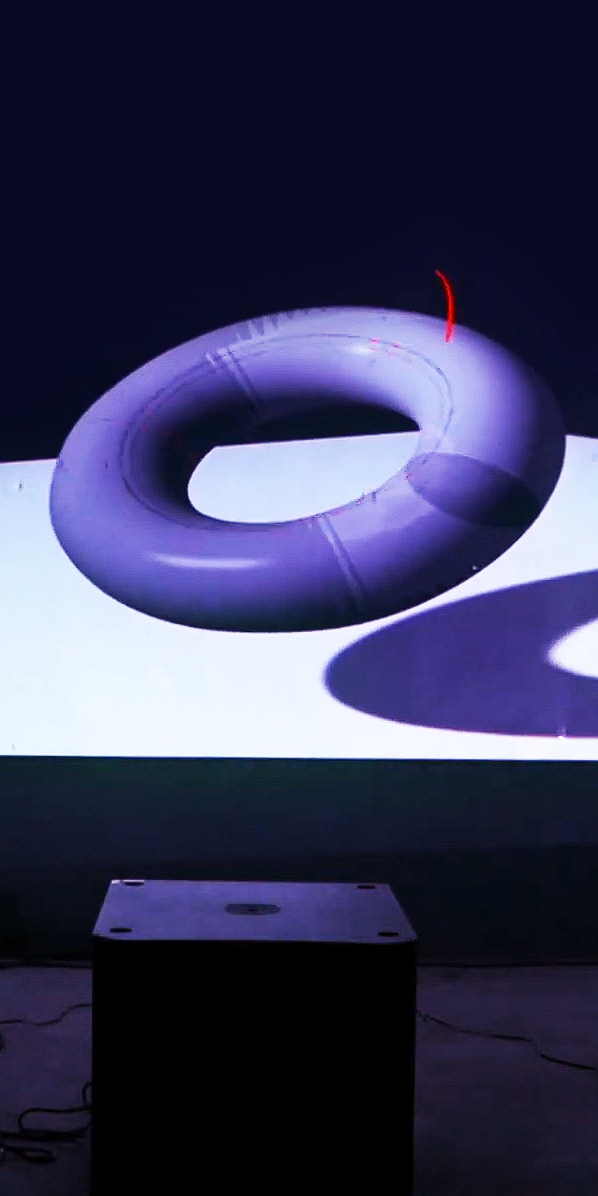
Yeh Ting Hao
Imagery Resonance
“This work-in-progress piece is about reverse oscilloscope synthesizer. When I used the ilda laser protocol to manipulate the laser graphic, I found it turned the vector graphic to stereo audio first , then the laser point started drawing by X and Y axis coordinates. So I reverse the system and made a live-control set to make 3d model data into sound.” Yeh Ting Hao
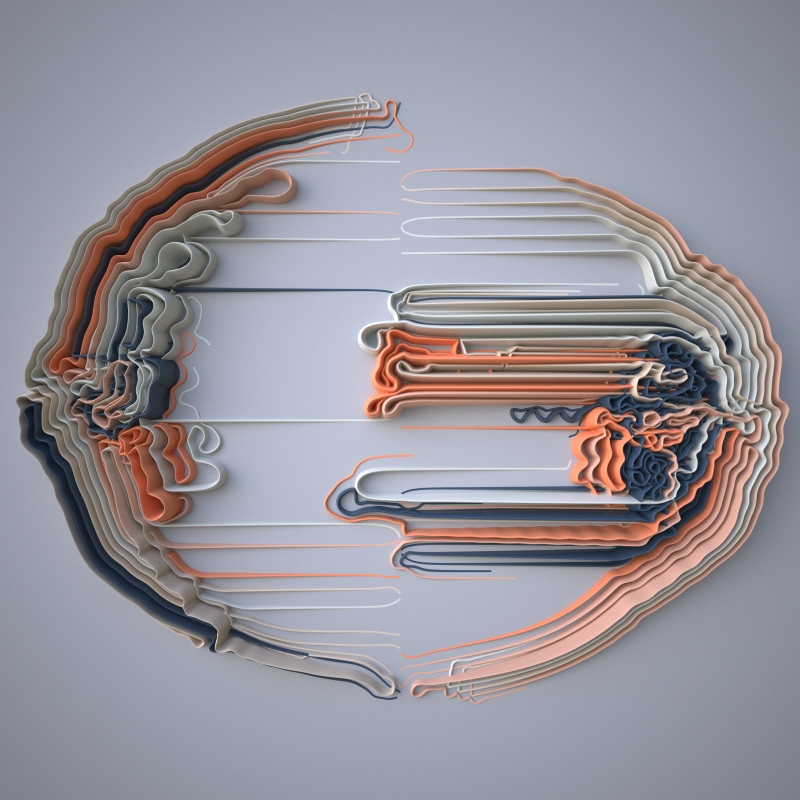
GIUSEPPE RANDAZZO
Джузеппе Рандаццо
Meander 7 / Horizontal velocity vectors from x = 0
Los códigos de computadora que utilizan para crear proyectos de arte generativo, arte de los nuevos medios de comunicación, los proyectos de las disciplinas del diseño, la arquitectura o de otro tipo, pueden encontrarse en territorios que han sido en gran parte sin explorar, en el que el arte y la ciencia se encuentran. Al principio, los agentes están definidas por variables como la posición, la velocidad y los límites (por lo general de un círculo). Cuando empiezan a moverse, ya que el espacio se agota, chocan, rebotan entre sí y de paso cambian la velocidad y el color, generando una espesa red de variaciones cromáticas.

Encor Studio
Initiation
Initiation is an open-end ceremony initiating the audience to the cult of infinity. The gigantic human-machine-interface is driven by the officiants controlling ancestral tools. As time seems to suspend itself, the crowd emerges into an ever hypnotizing state of oscillation. In this place the swing of the pendulum acts as the ever stimulating vector to guide the audience onto higher grounds.

Anke Eckardt
Between I you I and I me
BETWEEN | YOU | AND | ME is a wall of sound and light. Like any other wall, it defines an architectural space. Given its ephemeral, dynamic media – ultrasound and beams of light – the wall can be perceived only when the visitor comes close and interacts with it. Two thin membranes of light form a visible frame filled with sound. Multichannel, extremely vectored hypersonic speakers render audible various textures of broken glass: a sound architecture within the wall, comprised of juxtaposed single sound beams, whose constellation changes depending on the visitor’s position. Observed from a distance, the wall fades away: clear transparency and only faintly resonant tones attest to its non-existence.

Alisa Andrasek
Cloud Pergola
Inspired by the cloud formations and weather events, this mathematized cloud plays with visitor’s perception. Movement through the structure generates a series of dynamic interference views in its deep fabric, drifts and ruptures in visibility. A sea of redirecting vectors is pulling the visitor like an invisible gravity force through the fabric.

christopher bauder
skalar
SKALAR is a large-scale art installation that explores the complex impact of light and sound on human perception. Light artist Christopher Bauder and musician Kangding Ray give an audio-visual narration of radiant light vector drawings and multi-dimensional sound inside the pitch-dark industrial space of Kraftwerk Berlin. By combining a vast array of kinetic mirrors, perfectly synchronized moving lights and a sophisticated multi-channel sound system, SKALAR reflects on the fundamental nature and essence of basic human emotions.

John Russell and Joey Holder
TETRAGRAMMATON
A dialogue between these two artists on themes of myth, ritual and meaning, as much about their exhaustion and propensity to bewilderment as any potential they may inhere, for recuperation for and by language, culture and society. Joey’s work, ‘Religiously observant’, is inspired by alchemical and occult ideas, the world of spirits and hallucinations. The wall print features a gold CGI blazon of the Tetragrammaton It references the Sumerian mythology of the Annunaki a race of ancient chthonic fertility Gods, subsequently inscribed in a series of publications by Zecharia Sitchin (a kind of elder statesman of conspiracy theorists worldwide) as descendants of aliens, who enslaved the human race to extract gold from the earth. John’s work similarly ranges over territories of opposition: between ancient and contemporary; mythic and kitsch; between the viscid and primordial. It takes as its subject the vector of congealment, in the Marxist sense of the way labour power is congealed in commodities and so forth, extending this metaphor into an aesthetics of myth and ritual, emptied out, flattened, compacted like a sedimentary layer of anthropocene garbage, for the post-historical epoch.The sound component provides an aural complement to this structure of refuse, exhaustion and abjection. Mixing pre- or post-linguistic utterances, grunts, groans, screaming: a kind of secular glossolalia chaotically interwoven with whalesong, deep techno and political oratory.
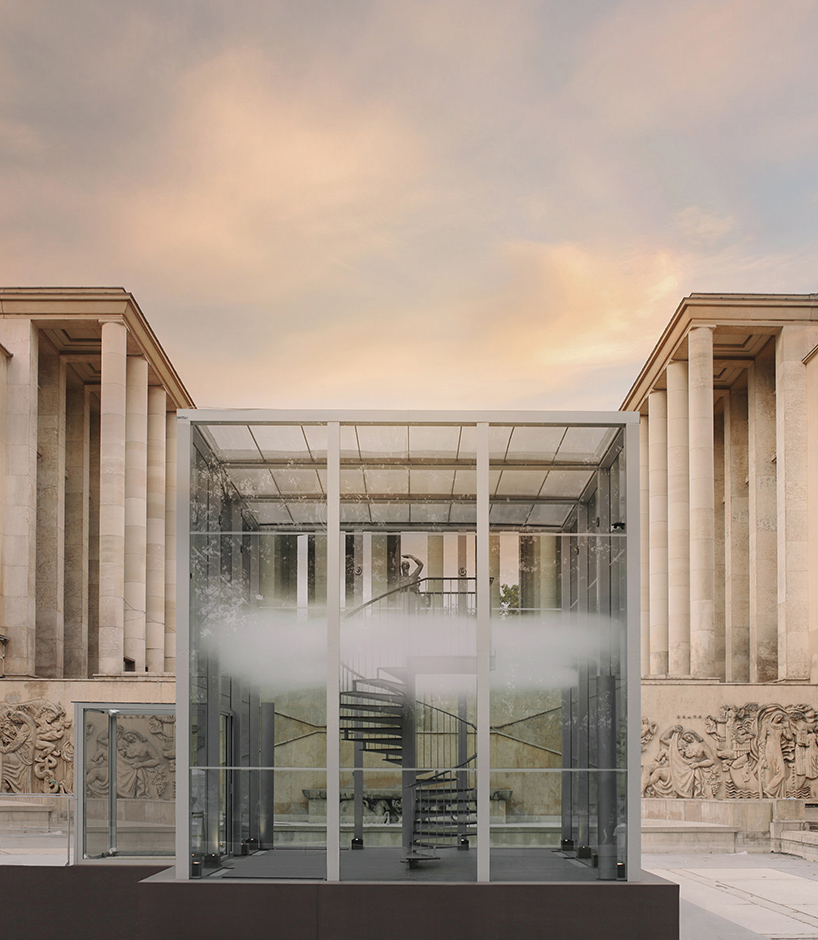
Mathilde Laurent
OSNI
‘the goal of the project is to present the fragrances of maison cartier to the public beyond any commercial or advertising context, in order to show that smell is an unrivaled vector of emotions‘, explains lead perfumer mathilde laurent. ‘[scent] is a source of wonderment, of questioning and surprise. an incredible sensation- making machine!’ OSNI symbolizes the hybridization of two distant worlds: olfaction and climate technology. a great amount of research and experiments ensured that the ‘perfuming’ of the cloud was possible, held in balance between two strata of air in an artful and elegant installation[…]
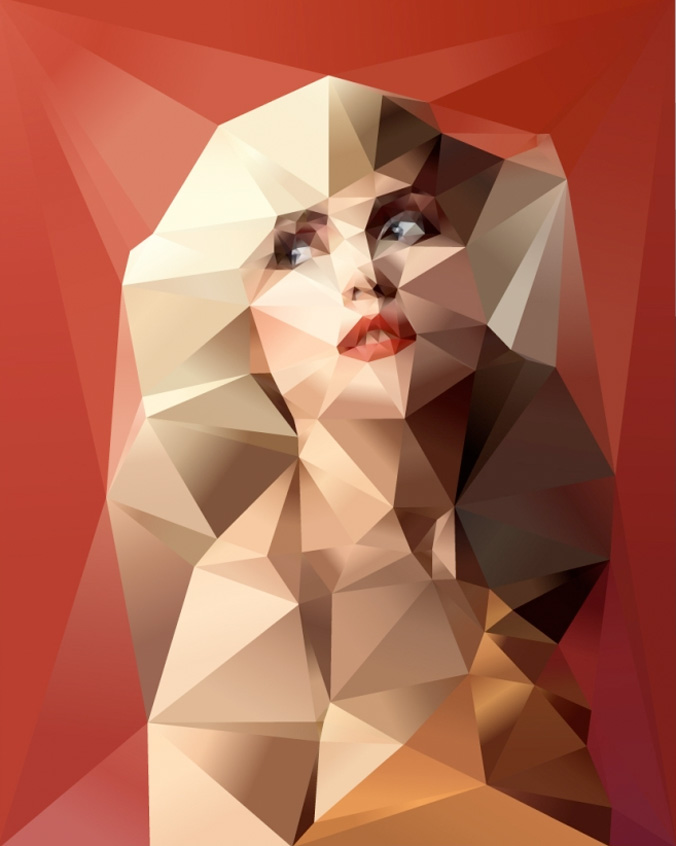
JONATHAN PUCKEY
Джонатан Пьюки
Delaunay Raster
Jonathan Puckey is a Dutch graphic designer who can script. He often uses Scriptographer, a scripting plugin for Adobe Illustrator, so that’s probably why he calls his work ‘conditional design’. ‘Delaunay Raster’ is a project with image vectorization based on Delaunay triangulation.

BAUMGARTNER + URIU
Taipei Performing Arts Center
he morphology and shape of the building was designed using sound-waves that were analyzed and transformed into three dimensional vectors. These vectors became the formal and structural framework for the design of the exterior envelope. The building materializes with a metal and glass enclosure that reveals its activities in a variety of scales and angles to the city.
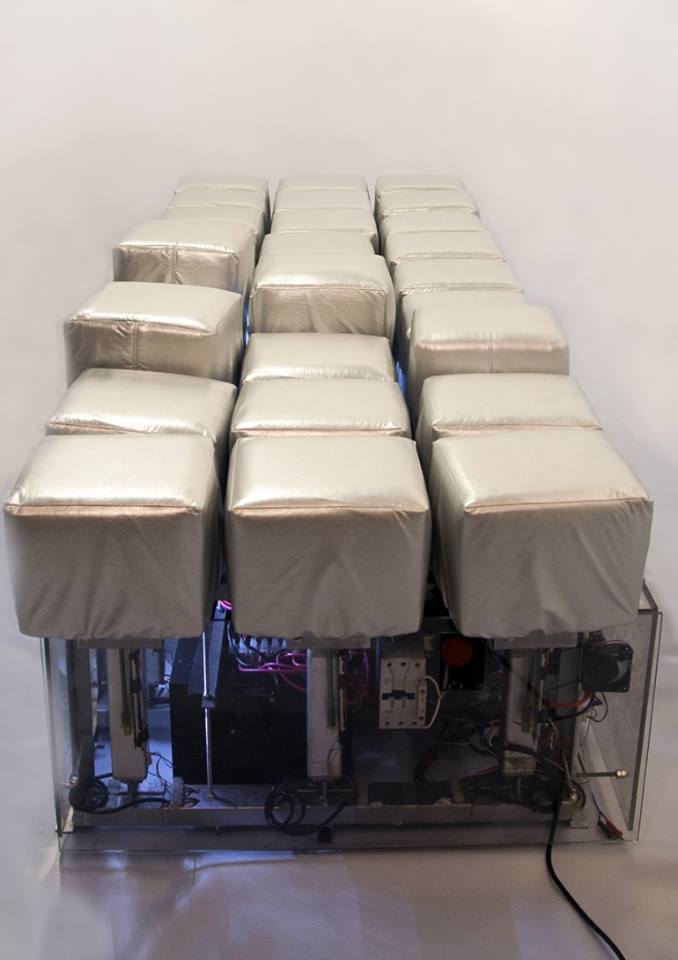
Ricardo Barreto and Maria Hsu Rocha
Martela
FILE FESTIVAL
Tactila is an art form whose medium is the sense of touch (tact) which is independent from the all the other ones and has its own intelligence, imagination, memory, perception, and sensation. It is well known that vision and sound have hegemony in arts and in other disciplines. Tactila takes place in time and, therefore, can be recorded and have various forms of notation for subsequent executions. That is why its development became possible only now, thanks to mechatronic and robotic systems which are compatible with machine languages.
The creation of tactile works involves a (tact) composition, which can be made through handmade notation and played on a keyboard or directly on the computer of the tactile machine ( robot ).
Tactile machines can present numerous tactile possibilities through points, vectors, and textures with varying rhythms and intensities, and be run in different extensions and locations of our body.
.
The first tactile machine is called “Martela”. It is a tactile robot comprised of 27 engines subdivided into three squares (3 x 3), i.e., each square has 9 engines. Each engine corresponds to a matrix point, so we have 27 tactile units that allow to touch the user’s body with various intensities.
